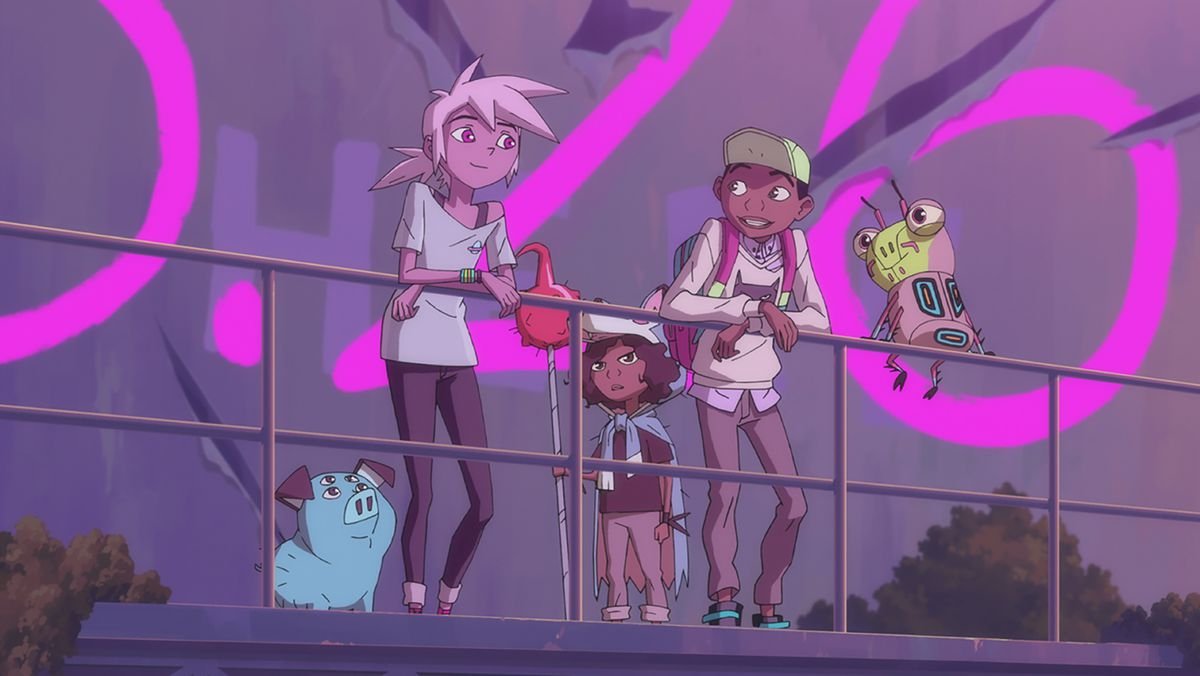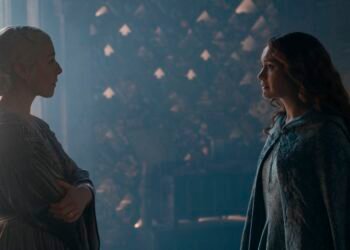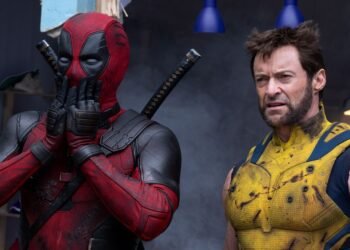In the first episode of Netflix’s new animated post-apocalyptic fantasy series Kipo and the Age of Wonderbeasts, the protagonist, excitable 13-year-old human Kipo (Karen Fukuhara), is on a quest to pet every cute thing that comes her way. That earns her the trust of a cute, four-eyed pig-creature that she dubs Mandu (after a Korean dumpling), but it also means that after she tries to pet some giant, multi-eared fluffy baby bunnies, their immense mother sits on her. By the end of the episode, Kipo learns that not all mutants are eager to meet humans — and not all humans want to befriend mutants.
The first episode of DreamWorks’ newest animated Netflix series feels like the creators cracked open a toy box and created a zany game of make-believe from everything inside. Each episode brings kooky creatures and wacky challenges that tie into a deeper, darker arc. Anyone who spent some part of their childhood making their stuffed animals fight world conquerors through the power of pop music should immediately understand.
Kipo and the Age of Wonderbeasts, created by How to Train Your Dragon 2 story artist Radford Sechrist, takes place in a world where mutated animals have taken over, and nature has swallowed the ruins of human civilization. While some human survivors remain on the surface, most have descended into underground communities known as burrows. After Kipo’s burrow is attacked by a mysterious giant mutant animal, she manages to escape to the surface.
Kipo’s plot is familiar, sending its young heroes on a fantasy exploration quest. It starts a little slowly, but once all the funky pieces start coming together, the show is a vibrant mosaic, with a unique world, multidimensional character relationships, and a deeper underlying plot that explores the deep-seated tensions between the surviving humans and the mutants.
[Ed. note: This post contains light spoilers for Kipo and the Age of Wonderbeasts.]

Image: DreamWorks Animaton/Netflix
Kipo’s quest is simple: To reunite with her freshly evacuated community, she and her newly met sidekicks must follow hints her father left behind and survive the perils of the surface world. Kipo’s overall goal is straightforward, and each episode brings the core cast to a new location, a new set of challenges, and a new MacGuffin to chase. But the familiarity of the initial plotline isn’t a detractor; instead, the episodic approach allows the world and characters the main cast encounters to be as wonderfully weird as possible.
Kipo’s world teems with strange life. While there are ruins and remnants hinting at a dark past — desolated convenience stores, wrecked buildings and vehicles — nothing about the setting feels like a typical ravished landscape. The world has continued to blossom and grow without humans. Arguably, it’s doing just fine without them. Nature has grown back, the night sky is gorgeously clear, and sentient animals (mutants, or “mutes” for short) have become the dominant species, each with their own quirks.
Season 1 introduces the Timbercats, a race of feline lumberjacks; the Umlaut Snakes, who rock out with guitars; and the Fitness Racoons, a pacifist group who are really into yoga. The animals’ designs are vibrant and innovative. How does a snake play a guitar without hands? By strumming with its tongue, of course. The process of watching the world expand, with new bizarre creatures appearing in each episode, is a constant draw. But the dynamic of the main cast, and the ways they grapple with the unknown, holds the fantasy together.
In a world full of thriving animals, humans scrounge around for scraps, but the main cast is mostly human. Kipo finds companions in mysterious lone fighter Wolf and aspiring DJ Benson. While Wolf refuses to befriend a mute, Benson is best pals with a talking bug named Dave. Sechrist and his writing team take their time coagulating these four characters into a fellowship, especially since everyone but Kipo is used to striking out on their own.

Image: DreamWorks Animation/Netflix
But once they’re established travelling companions, their relationships spark, and their desires, fears, and flaws often clash. Kipo is massively idealistic, but her peaceful approach doesn’t always work against threats. Wolf, the most fearsome fighter of the bunch, uses a mask of cynicism to cover her deep-seated loneliness. Relaxed, cheerful Benson takes the easy way out. He and slacker-bug Dave are a two-man team of evading conflict, and they almost bail on Kipo and Wolf early on when things get tough. But they don’t — and the group becomes close, finding joy and solidarity with one another, though not without conflict.
Kipo boldly explores the consequences of selfish decisions. Wolf finds a pivotal clue that would be important to Kipo, but in a moment of weakness, decides to keep it to herself because she’s afraid of losing her newfound family. When the truth comes out, it’s a raw, emotional moment — Kipo is rightfully angry, until she realizes Wolf did it out of fear, not malice.
Kipo keeps its group together, but also sends them off in pairs to show how everyone interacts, and how their beliefs collide sometimes. Kipo and Benson have more optimistic worldviews than the cynical Wolf, but Benson flees from his problems, while Kipo thinks every problem can be solved with a hug. In a post-apocalyptic world, sometimes that doesn’t cut it. But sometimes it does. No one character is right all the time, and whether the group runs, fights, or talks it out depends entirely on the situation — and which odd creature they encounter. Kipo offers a full gamut of character interactions and group dynamics, by the end of the first season showing not just fully fleshed-out characters, but fully fleshed-out relationships that get tested in the trials of the world.
And the animation style aids in expanding the setting and pushing the tensions forward. Kipo is visually similar to other DreamWorks shows on Netflix. Like She-Ra and the Princesses of Power, Kipo employs a more hyper-stylized realism and distinct color palette compared to Voltron: Legendary Defender. But while She-Ra is built around pastels and softer curves, Kipo is all neon colors and sharp angles, pulling even further away from realism.
The exaggerated style lends itself to popping action sequences with exciting splashes of color and vibrant lines and angles, coupled with an amazing hip-hop inspired soundtrack. The post-apocalyptic world is very much alive, and not in the typically bleak, desolate survivor way. The backgrounds, in particular, are vast and gorgeously rendered. The night sky is absolutely awe-inspiring, a vivid image of how beautiful the world can be, even after human civilization as we know it ends. It’s also a reminder of the show’s deeper underlying plot, with nature continuing on just fine without humans.

Image: DreamWorks Animation/Netflix
While draped in a Tolkien-esque, group-on-a-mission fantasy story, Kipo is actually about the tensions between the mutes and the surviving humans, whether they’re surface dwellers like Wolf and Benson, or Burrow people like Kipo. The surface humans are trying to survive in a hostile post-apocalyptic world, but for the mutes, the world isn’t falling apart — this is normalcy for them. They’re part of an inevitable evolution that happens when humans are no longer the dominant species. That’s a pretty weighty theme to handle, especially when bright-eyed Kipo gets thrown into the mix and just wants everyone to get along. Not all mutes hate humans, and not all humans hate mutes, but there’s enough historical tension that living in total peace will be an uphill battle.
As Kipo and her friends meet more mutes who challenge their worldviews — and as the mutes they encounter start to re-evaluate their feelings toward humans — those barriers begin to shift. Despite the darkness of the world, there’s still joy to be found in the brilliant night sky, in the music Benson and Kipo compose, in the trash carnival created by rats, in the bonds forged by the foursome. And above all, there’s joy in the friendships across species, which may just spark change for this weird, wonderful world.
Kipo and the Age of Wonderbeasts is available now on Netflix.















































